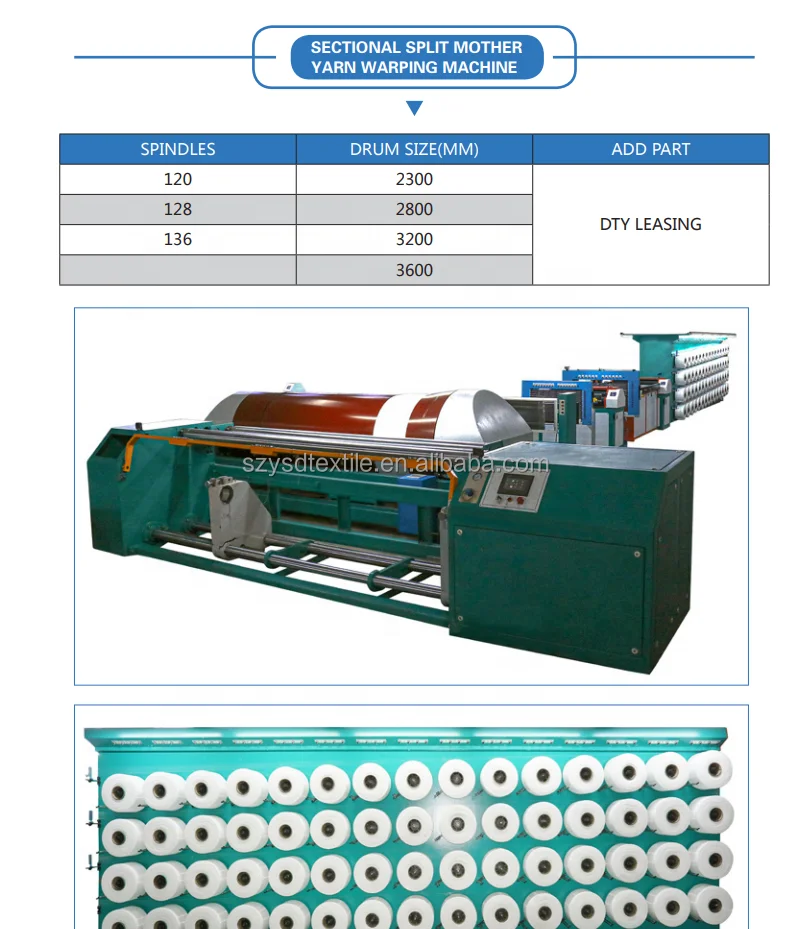A high-performance sectional warping machine is absolutely essential in the textile manufacturing industry and could be one of the determinants for your success - or failure. They are the grunt work of warping (read: setting up yarns to weave): machines that carefully organize threads onto warp beams, which when attached to the loom create a taught base for weaving. However, with so many factories to choose from globally in the world claiming that they are going to be your best option - how do you sort through all of this and make sure these everywhere end up selecting a supplier? The following article explores those perspectives for a buyers guide that covers not only finding quality machinery, but also ensures sustainability and long-term partnership(s).
A Buyer's Guide
Starting your search for a sectional warping machine factory needs to have a 100 % clear focus of what you need. Review your production numbers, fiber range for processing requirements desired speed and degree of automation. Now that you know your parameters, you can filter out potential suppliers easily. Find the Manufacturers - do some online research, attend industry expos and get into forums to help you build a list of manufacturers. Don't forget to read the customer reviews and case studies - they will show you how it actually works in real life.
Top Factory Insights
The cream of manufacturers are the ones who innovate, utilise technology and provide a service. Find manufacturers that focus on R&D and keep their machines updated, improving machinery to improve efficiency and reduce waste. Moreover, they are well recognized globally which means that the firm deals with different client markets hence a flexible and reliable service. Prioritize on-site factory visits or even virtual tours to evaluate their production facilities, quality control processes and post-sales support network. A manufacturer who transparently and effectively communicates with you is one worth your business.
How to Look at Warping Machine Factories
A complete examination of the software does not take into account only hardware factors. Take note of how long the factory has been in business — many know the routes (the ins and outs) better than you as to what demand is required down range. Ask how customizable the machine is as a function of your workflow; this can have real efficiency benefits if you're not simply adopting someone else's. Also, evaluate their warranty polices, maintenance contracts and technical support response time. With a responsive support system, your down time is minimized and you are making most of the investment.
Leading Warping Machine Manufacturers in Eco-Friendly Practices
But the scenario is such, that sustainability flickered an option from a bare minimum necessity in manufacturing space currently. Look for manufacturers who care about the environment in both how their products are made and what goes into them. This can be for energy-saving machines, water-saving or compatible with the recycling of fibers. Some of the prominent manufacturers may also have developed recycling programs for components or packaging. Check to see if their operations comply with international environmental standards, such as ISO 14001 that states the need for effective management systems around control of pollution.
Making Your Warping Machine Supplier a Long-term Partner
Trust and growth are two sides of the same coin-and what keeps any relationship with a supplier going in the long-term. Pick a factory that sees you as more than just another client on the books. Talk about their future roadmap and how does it resonate with the growth curve of your company. Frequent communication channels and mutual problem solving help inculcate a sense of partnership. In addition, be clear about checking the financial solvency and market reputation of suppliers so that they can remain your partners for long.
So by this conclusion, it is evident that choosing the right sectional warping machine manufacturer involves a lot of research and contemplation on different factors while keeping in mind our environment also. Investing in these three essentials does not mean you are purchasing equipment specifically - it is becoming a part of partnership to greater operations, environmental responsibility and long-term success within today's competitive textile manufacturing landscape.

 EN
EN
 FR
FR
 DE
DE
 EL
EL
 IT
IT
 JA
JA
 KO
KO
 RO
RO
 RU
RU
 ES
ES
 ID
ID
 UK
UK
 VI
VI
 TH
TH
 TR
TR
 BN
BN
 NE
NE




